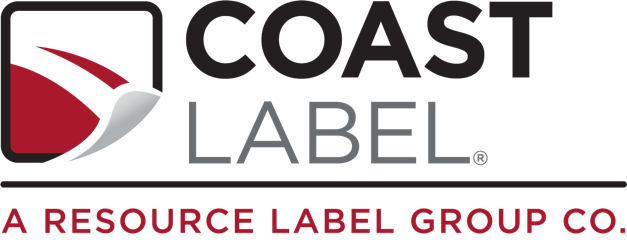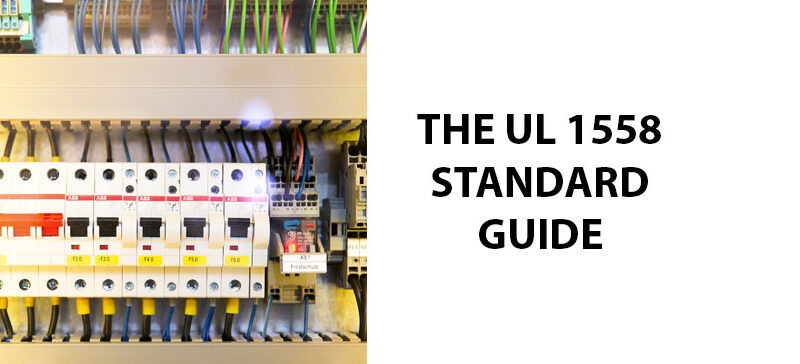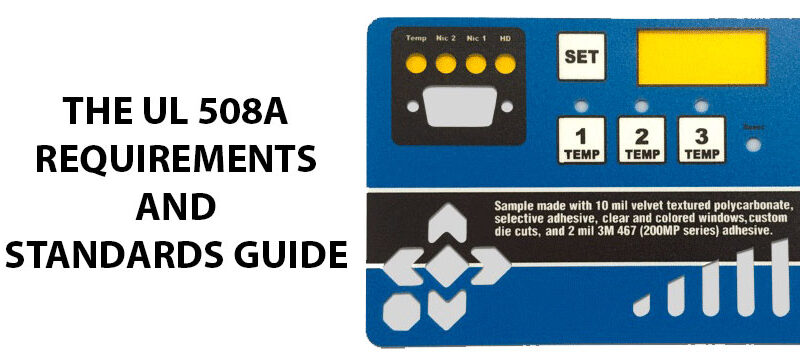Low voltage switchgear is essential for power distribution in industrial plants and healthcare facilities alike, but before the National Electrical Code, they often presented a fire danger. UL 1558 is a safety standard that sets rigorous requirements for the design, construction, and testing of switchgear systems. It aligns with the NEC, but provides specific regulations for low-voltage switchgear.
Read on if you’re looking to learn more about the UL 1558 standard. We’ll explain what it is, what the requirements are, and how it’s beneficial. Plus, we’ll compare it to the related UL 891 so you can understand the differences between the two.
What Is UL 1558?
UL 1558 is a safety standard that was developed by Underwriters Laboratories (UL). It applies to metal-enclosed low-voltage power circuit breaker switchgear, outlining rigorous standards for the design, construction, and testing of this electrical equipment. Following the UL 1558 standard ensures that switchgear is reliable, efficient, and safe to use.
UL 1558 covers the following types of switchgear:
- Switches
- Control equipment
- Metering equipment
- Instrumentation
- Protective equipment
- Low-voltage power circuit breakers
- Regulating equipment
UL 1558 switchgear can handle up to 1000 volts AC and is rated for high short-circuit withstand capabilities, which is essential for complex power systems.
The UL 1558 Requirements
The UL 1558 standard outlines strict requirements for the construction and performance of metal-enclosed low-voltage switchgear. These systems are often used in high-demand environments, such as data centers and large manufacturing plants, where high safety measures are necessary. Here’s a breakdown of some of the key requirements in UL 1558:
- Heat threats to wiring: UL 1558 sets strict temperature rise limits to protect conductors, insulation, and terminations from overheating during normal operation. This ensures that internal components, like busbars and cables, do not exceed safe temperature thresholds to prevent insulation degradation, wiring damage, and potential electrical wire hazards.
- Operator safety: Operator protection is a core focus of the UL 1558 standard. It mandates that barriers and insulation be used to prevent accidental contact with live parts. Draw-out breakers allow maintenance and inspection without exposing energized components, and arc-resistant designs redirect or contain arc flash energy away from personnel.
- Compartmentalization: UL 1558 requires complete physical separation between major sections of the switchgear, including breaker compartments, busbar compartments, and cable compartments. Keeping these components isolated helps contain faults within a specific section, reducing the chance of cascading failures.
- Corrosion protection: Corrosion protection is vital for preventing deterioration that could expose live parts and compromise structural integrity. To ensure the switchgear is durable and safe, UL 1558 requires the use of galvanized or coated steel, protective finishes like powder coating, and environmental sealing for outdoor units.
- Markings: Clear and permanent markings are another requirement under UL 1558. Proper labeling is important for safe operation and troubleshooting. Some of the markings required include voltage and current ratings, short-circuit interrupting ratings, manufacturer identification, breaking position indicators, and warning and caution labels.
To get a full list of all the requirements, you’ll need to purchase the standard from UL or ANSI. Meeting these requirements ensures that switchgear is safe and reliable over its service life while also minimizing the risk of electrical faults and hazards.
UL 1558 vs 891
Both UL 1558 and UL 891 are related standards for safety when dealing with low-voltage switchgear and switchboards. Both standards are designed to keep operators, maintenance workers, and inspectors safe when dealing with power systems. They also both rely on spacing and compartmentalization, proper labeling, and rigorous testing. However, UL 1558 and 891 have some major differences. In the broadest sense, UL 891 is for general-purpose switchboards used in typical commercial and light industrial places. UL 1558, on the other hand, is for low-voltage switchgear used in demanding environments where more robust regulations are necessary.
More specifically, UL 1558 switchgear is more complicated, with multiple components like draw-out power circuit breakers, busbars, fuses, and more. These systems are used in facilities that require high reliability and performance. Although both UL 1558 and 891 rely on compartmentalization for safety, UL 1558 requires stricter isolation of components. Additionally, the UL 1558 standard requires arc flash protective measures and both front and rear access. This switchgear comes with higher short-circuit withstand ratings than UL 891 and is commonly used in demanding environments like power plants, industrial facilities, and data centers.
UL 891 switchboards, on the other hand, are typically much simpler, handling less complicated power systems. The standard includes some spacing and compartmentalization, but not at the same level as UL 1558. Additionally, there is no requirement for arc flash protection and no need for rear access. These switchboards are commonly used in commercial buildings and office spaces.
The Benefits of UL 1558
Some of the benefits of UL 1558 switchgear include:
- Reduced downtime: The use of draw-out power circuit breakers in UL 1558 switchgear allows for quick replacement or maintenance without shutting down the entire system.
- Easy access: Because they include both front- and rear-access, UL 1558 switchgear is easier to access during maintenance and inspections.
- High short-circuit withstand ratings: This switchgear comes with high short-circuit withstand ratings, which means it can handle high fault currents without failing.
- Arc flash protection: The required arc flash protection keeps employees safe in case of an arc fault.
UL1066 vs 1558
When it comes to switchgear, you’ll often see talk of UL 1066 vs 1558. They’re both related, but deal with separate products. UL 1558 is the standard that covers low-voltage switchgear, while UL 1066 covers low-voltage AC power circuit breakers, which are used in UL 1558 switchgear. These circuit breakers are designed so they can be replaced without shutting down the whole power system. Essentially, UL 1066 is the standard for a component used within the UL 1558 system.
UL 489 vs 1558
How does UL 489 vs 1558 compare? They both deal with safety and performance within electrical systems, but they serve very different functions. UL 489 is the safety standard for molded case circuit breakers that are used in panelboards and switchboards for overcurrent protection in commercial and light industrial power systems. UL 489 MCCBs are used within UL 891 switchboards. UL 1558, on the other hand, is the standard for low-voltage switchgear used in demanding environments. It relies on UL 1066 circuit breakers rather than MCCBs.
Is It Mandatory or Voluntary?
Technically, UL 1558 is a voluntary standard with no federal law that requires universal compliance. However, it’s often treated as mandatory, depending on the jurisdiction you live in. Many building codes, customer specs, and insurance requirements need UL 1558 compliance, making it a de facto requirement.
UL 1558 Marks and Labels
As part of the UL 1558 standard, switchgear must carry specific markings and labels to be compliant. Some common required marks and labels include:
- UL Mark: Approved UL 1558 switchgear must be labeled with the UL Mark, which includes “UL” in a circle, often accompanied by text like “Listed Switchgear.”
- “Suitable for Use as Service Equipment”: This mark is used on sections of the switchgear that is to be used as service equipment.
- “WARNING – Do not connect grounding conductors to these or any other neutral terminals. To do so will defeat ground-fault protection.” This must be marked on the neutral bus for load termination on switchgear that has ground-fault protection.
- “Emergency Transfer Switch Section”: This must be marked on areas that have an automatic transfer switch.
- Inspection labels: UL 1558 switchgear typically needs the control number, voltage rating, interrupting rating, and a description of the type of breakers used. This helps inspectors, engineers, and facility managers verify that the equipment meets safety standards.
- Components: Individual components, like breaker positions, compartments, grounding systems, and maintenance instructions, are typically labeled for safety and ease of servicing.
How Much Does It Cost?
UL 1558 switchgear is one of the most expensive types of low-voltage power distribution equipment. That’s because of its robust design, high-performance capabilities, and strict testing. Costs can vary widely, depending on the system voltage, current rating, number of breakers, and more. On average, UL 1558 switchgear can cost anywhere from $50,000 to over $500,000 for a complete lineup. Although expensive upfront, UL 1558 switchgear is highly durable and reliable and allows for reduced downtime in critical environments.
Compliance and Regulation
While UL 1558 itself is a voluntary standard, it helps meet various regulatory requirements for electrical installations. Using UL 1558 switchgear can simplify inspections of your facility and provide safety in critical environments.
For example, the National Electrical Code, or NEC, requires that electrical equipment be listed or labeled by an NRTL like UL. While the NEC doesn’t explicitly mandate UL 1558, it does specify that switchgear systems need to meet safety standards recognized by UL. Because of this, many engineers and contractors choose UL 1558-compliant gear to fulfill the NEC requirements.
Another way that UL 1558 helps with compliance is with OSHA. Although OSHA doesn’t mandate UL 1558, using UL-certified equipment ensures that safety measures like arc flash containment, proper insulation, and secure compartmentalization are in place. In turn, this helps meet OSHA’s general duty clauses for maintaining a safe workplace.
UL 1558 Conclusion
The UL 1558 standard is essential in mission critical environments like hospitals, data centers, and industrial facilities. UL 1558 switchgear provides added protections to those who need to access it while also ensuring performance and minimizing downtime.
Part of UL 1558 includes proper labeling and marking of the switchgear. But not all labels are the same. You need labels that will last for the life of the switchgear and remain legible. That’s where Coast Label comes in. We’ll work with you to design the perfect custom labels for your switchgear. We use only the best materials that last through the toughest of industrial conditions. Contact us today to learn more!



